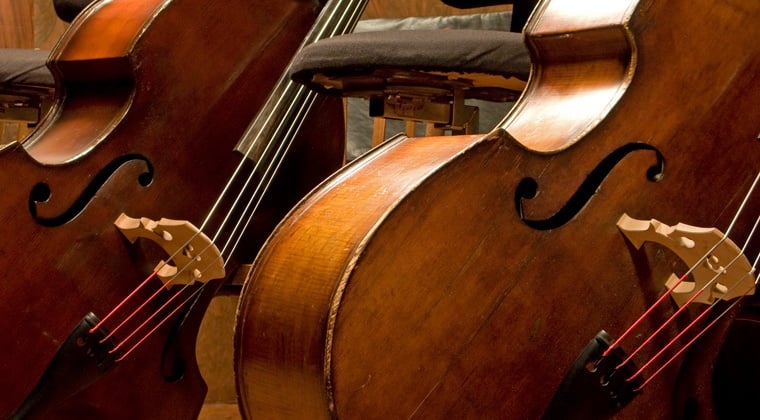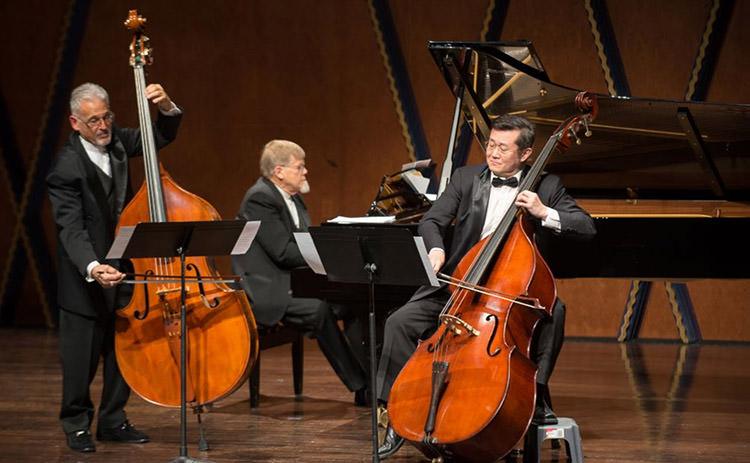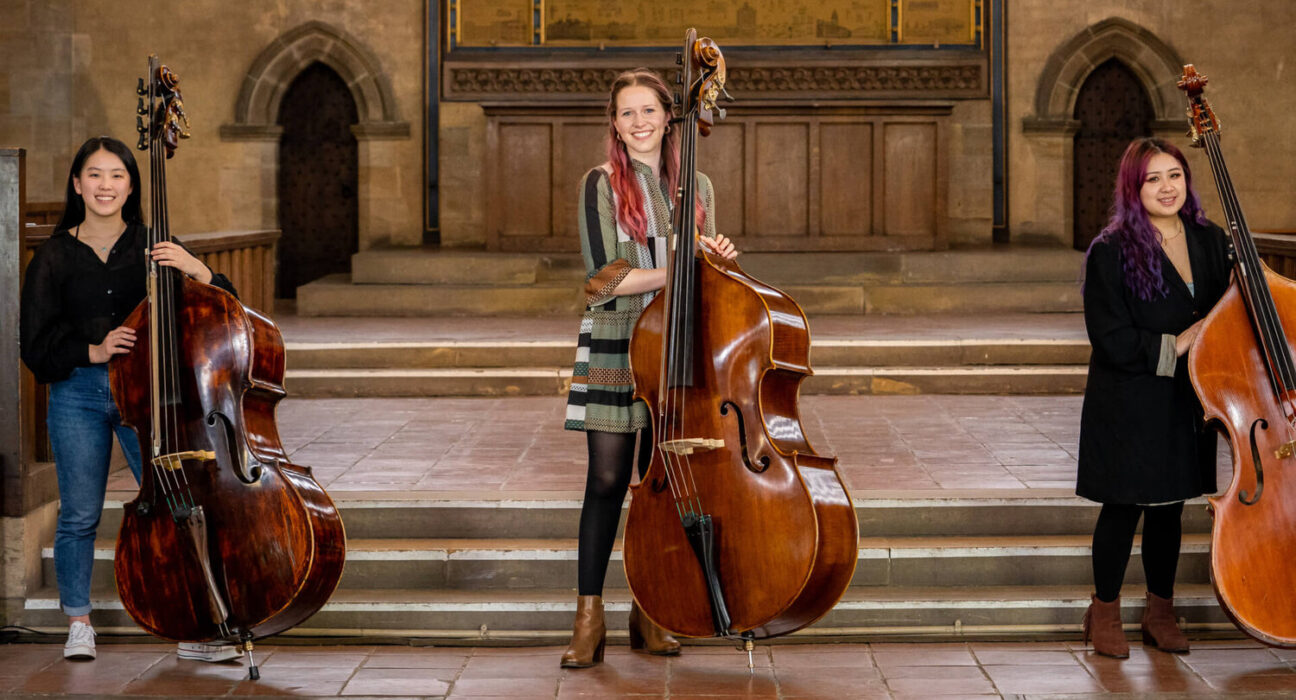The Double Bass, often regarded as the heartbeat of musical harmony, serves a vital role in the emotional landscape of music. Its deep, sonorous tones not only provide foundational support in orchestras and jazz ensembles but also resonate deeply within the listener’s heart. This majestic instrument, with its robust stature, has been a silent yet powerful force in shaping various genres, from classical to contemporary styles. As we delve into the multifaceted world of the double bass, we will explore its unique characteristics, cultural significance, historical evolution, and the thriving community that surrounds it.
The Instrument’s Unique Characteristics
Before we embark on this exploration, it’s essential to understand the double bass in terms of its physical attributes and sound production. The qualities of this instrument distinguish it from others, allowing it to carve a unique niche in the realm of music.
Physical Attributes of the Double Bass
The double bass is renowned for its impressive size and construction. Standing at nearly six feet tall, this giant among string instruments commands attention both visually and aurally. Constructed primarily from wood, the body of the double bass is hollow, which allows it to produce rich, resonating tones that fill concert halls.
The choice of materials is crucial; seasoned woods such as spruce for the top and maple for the back offer a blend of strength and tonal quality. These specific woods contribute to the warmth and depth of sound that the double bass is known for. The craftsmanship involved in creating these instruments is an art form in itself, as luthiers (string instrument makers) carefully sculpt each piece to enhance its acoustic properties.
The strings of the double bass, typically made from gut, steel, or synthetic materials, are tuned in intervals of fourths (E1, A1, D2, G2). This tuning system differs significantly from that of other string instruments, emphasizing the bass’s role in providing harmonic richness. The low pitch produced by the strings creates a gravitas that is felt as much as it is heard—a characteristic that defines the emotional impact of the instrument.
Sound Production Mechanism
Understanding how the double bass produces sound adds another layer to its charm. When a player draws the bow across the strings, vibrations travel through the bridge and into the body of the instrument, amplifying the sound. This mechanical process is integral to its ability to project deeply resonating notes that can evoke strong emotions.
The technique employed by the musician also plays a significant role in producing sound quality. Whether plucking the strings (pizzicato) or using the bow (arco), each method results in distinct tonal colors. The dynamic range of the double bass is vast; it can produce soft, warm tones suitable for intimate settings or thunderous crescendos that command attention in orchestral performances.
This complexity enables the double bass to venture beyond mere accompaniment. Skilled players can utilize techniques like harmonics and slap bass, expanding the sonic capabilities of the instrument. These creative expressions allow the double bass to transcend its supportive role, offering melodic lines that resonate powerfully with audiences.
Melodic Expression Beyond Accompaniment
While traditionally viewed as a supporting instrument, the double bass possesses a remarkable capacity for melodic expression. Many iconic compositions feature soaring solos that highlight the instrument’s vocal-like qualities. Renowned double bassists, such as Charles Mingus and Ray Brown, have pushed the boundaries of what the instrument can achieve.
In jazz music, the double bass becomes a soloist as much as a timekeeper. Its ability to articulate intricate walking bass lines while embracing improvisation lends itself beautifully to personal expression. Musicians who master the double bass can convey narratives through their playing, transforming a simple melody into a profound emotional experience.
The versatility of the double bass also allows it to adapt to various genres. In classical music, it enriches orchestral textures, while in contemporary styles like rock or pop, it enhances rhythm and groove. This wide-ranging capability underscores the importance of recognizing the double bass as more than just a supporting player; it is an essential element of musical dialogue.
Historical Perspectives and Evolution

To truly appreciate the double bass, one must delve into its historical lineage and evolution over centuries. Understanding its transformation through different musical eras provides valuable insight into the instrument’s current significance.
Origins of the Double Bass
The history of the double bass can be traced back to the viol family, which became prominent during the Renaissance period. Early versions of the instrument were significantly smaller and featured varied tunings. As musical styles evolved, so too did the design and function of the double bass.
Through the Baroque and Classical periods, the double bass gained prominence as composers increasingly recognized its potential. By the time of Mozart and Haydn, the instrument became an established member of the orchestra, contributing to the harmonic foundation of their masterpieces. This era marked a turning point, as musicians began to explore its expressive capabilities more fully.
The transition from the viol family to the modern double bass involved substantial changes in construction and playability. Luthiers began crafting larger instruments designed to withstand greater tension in the strings, resulting in deeper, more resonant tones. These advancements laid the groundwork for the double bass as we know it today.
The Double Bass in the Romantic Era
The Romantic period witnessed a surge in the popularity of the double bass, as composers sought to evoke deeper emotional responses in their music. Notable composers like Tchaikovsky and Mahler embraced the instrument, incorporating it into their expansive orchestral works.
During this time, the double bass was often called upon to deliver dramatic passages, reinforcing the emotional weight of the music. The instrument’s ability to shift between supporting harmonies and soaring melodies added layers of meaning and depth to compositions.
This era also saw a rise in virtuosity, as musicians began to push the limits of the double bass. Technique-focused schools emerged, nurturing a new generation of skilled players who would continue to elevate the instrument’s status within the classical tradition.
The Modern Double Bass in Contemporary Times
The 20th century marked a transformative period for the double bass, intertwining it with the emergence of jazz, pop, and experimental music. Musicians explored new techniques and styles, further enhancing the instrument’s flexibility and appeal.
Today, the double bass stands at the intersection of tradition and innovation. With advances in technology, including the advent of electric bass models, players can explore a wider range of tones and sounds, appealing to diverse musical tastes.
Furthermore, resources such as buyer’s guides for aspiring musicians play a crucial role in nurturing the next generation of double bassists. Demystifying the complexities of purchasing an upright bass ensures that young artists feel supported in their pursuit of mastering this remarkable instrument.
Cultural Implications of the Double Bass
The presence of the double bass in different musical cultures offers a fascinating lens through which to examine its significance. From jazz clubs to symphonic stages, this instrument has adapted, thrived, and influenced countless musical landscapes.
The Role of the Double Bass in Jazz

Jazz represents one of the most dynamic environments for the double bass. Within this genre, the instrument assumes dual roles—acting simultaneously as a rhythm keeper and a solo voice. The rhythmic foundation provided by the double bass allows musicians to experiment freely, creating an atmosphere ripe for creativity and innovation.
One of the most compelling aspects of the double bass in jazz is its ability to convey emotion through improvisation. Players like Charles Mingus, known for his groundbreaking compositions and virtuosic skills, transformed the perception of the double bass within jazz. His performances showcased the instrument’s potential for complex rhythms and vibrant melodies, inspiring generations of musicians.
The connection between the double bass and jazz is a living testament to the instrument’s adaptability. It seamlessly blends with various musical styles while retaining its identity, solidifying its position as a pivotal component of jazz ensembles across the globe.
The Double Bass in Classical Music
In contrast to its role in jazz, the double bass in classical music presents a different set of challenges and opportunities. Conductors must possess a profound understanding of their double bass sections to fully leverage the instrument’s capabilities. Unfortunately, many conductors overlook this aspect, leading to missed opportunities for richer orchestral textures.
The classical repertoire for the double bass varies widely, ranging from Baroque works to contemporary compositions. Understanding the nuances of orchestration and arrangement is critical for highlighting the double bass’s strengths. This careful consideration allows the instrument to shine, enhancing the overall performance rather than merely filling out the harmonic structure.
Moreover, the collaborative nature of orchestral music emphasizes the importance of blending the double bass into the ensemble. The synergy between musicians is palpable when the double bass plays a prominent role, fostering a sense of cohesion and unity within the orchestra.
The Global Influence of the Double Bass
As music continues to evolve, so does the influence of the double bass across varying cultures and genres. In folk traditions worldwide, variations of the double bass appear in diverse forms, reflecting local musical practices while maintaining the essence of the original instrument.
From the Spanish contrabajo to the Indian double bass, regional adaptations showcase how this instrument transcends borders. Each culture brings its interpretation, contributing to a rich tapestry of sound that connects the global community. This cultural interchange enriches the double bass’s legacy, ensuring its relevance in contemporary music.
The double bass serves as both a bridge between traditions and a canvas for modern expression. Its ability to integrate within various musical contexts highlights its role as a unifying force in a world characterized by diversity.
Engaging with the Double Bass Community

In today’s digital age, platforms like Reddit and Quora have become vibrant spaces for discussions focused on the double bass. These online communities facilitate knowledge-sharing among enthusiasts and professionals alike, fostering a deeper appreciation for the instrument.
Knowledge Sharing and Community Building
Within these platforms, players can ask questions and share experiences related to the double bass. Topics range from tonal differences between various bass types to historical inquiries about the instrument’s development. This collective engagement reflects a community dedicated to understanding and celebrating the complexities of the double bass.
Members of these forums often share insights about techniques, sheet music recommendations, and their personal journeys as musicians. Such exchanges create an inclusive environment where aspiring double bassists can seek advice and mentorship from experienced players.
The growth of online communities has democratized access to information and resources, making it easier for individuals to connect regardless of geographical barriers. This shared knowledge strengthens the bond among double bassists worldwide and inspires newcomers to embark on their musical journeys.
Collaborations and Performances
In addition to discussions, online platforms facilitate collaborations and performances among double bassists. Musicians now have the opportunity to connect with peers across the globe, forming groups that perform together digitally or through live-streaming events.
These collaborations not only showcase the versatility of the double bass, but they also inspire creativity and experimentation. Players can exchange ideas, blending their unique styles to create innovative compositions that reflect the diversity of the community.
Moreover, these initiatives reinforce the idea that the double bass is more than just an instrument; it embodies the very essence of musical creation and interaction. It serves as a reminder of the power embedded in low tones and the relationships forged through harmony.
Conclusion

The double bass is a remarkable instrument that resonates profoundly across musical genres and cultures. Its rich history, unique characteristics, and emotional depth make it an indispensable part of the musical landscape. As we navigate through the evolving world of sound, the double bass remains a steadfast companion, inviting musicians to explore new horizons while honoring its storied past.
Engaging with the double bass community fosters connections and shared experiences, ensuring that the legacy of this extraordinary instrument continues to thrive. Through collaborative efforts and knowledge-sharing, the future of the double bass is bright, promising to inspire generations of musicians to come.
Ultimately, the double bass is not merely an instrument; it is a vessel of emotion and expression, reminding us of the beauty found in musical harmony.
✉️ Stay Connected — Subscribe for Weekly Updates
Discover timeless stories, practical wisdom, and beautiful culture — delivered straight to your inbox.
*We only share valuable insights — no spam, ever.







tlover tonet
Tháng 9 17, 2024certainly like your web-site but you need to test the spelling on several of your posts. Many of them are rife with spelling issues and I in finding it very bothersome to inform the reality then again I will surely come back again.
John Son
Tháng 9 17, 2024thank you so much
Ona Carone
Tháng 9 17, 2024You are my intake, I have few blogs and sometimes run out from to brand.
Free Sports Streams Online
Tháng 9 17, 2024I too think thence, perfectly indited post! .
rwanda gorilla trekking tour
Tháng 9 17, 2024Pretty! This was a really wonderful post. Thank you for your provided information.